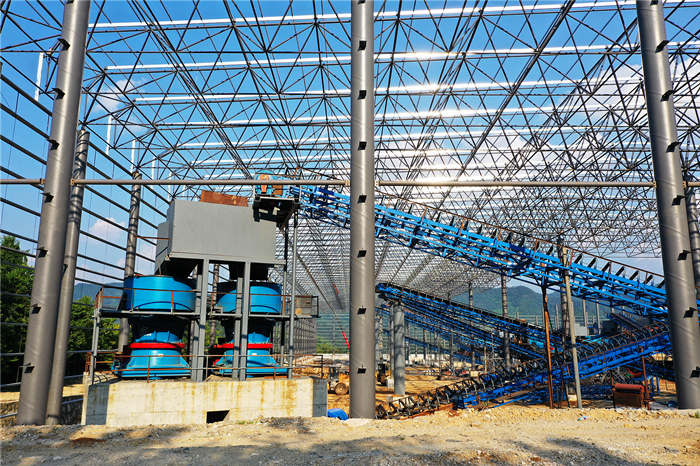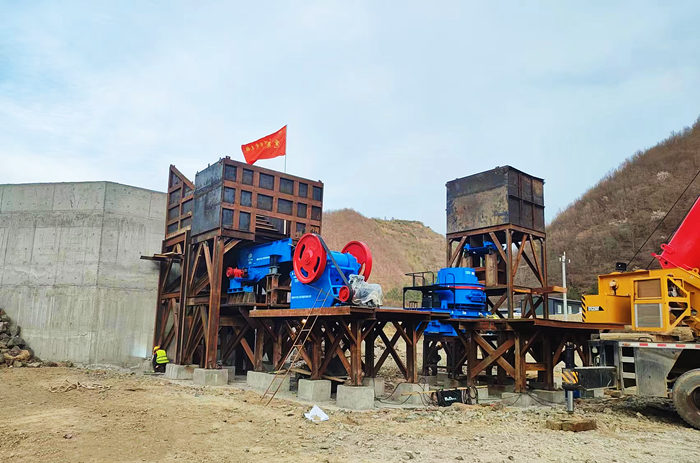Product Knowledge
What Materials are Needed for Artificial Sand?
author:dahua2 time:2023-08-24
Artificial sand refers to sand processed by sand making machines and other auxiliary equipment. The finished products are more regular and can be processed into the sand of different rules and sizes according to different process requirements. The finished product of machine-made sand has uniform particle size and adjustable particle size, which can better meet daily needs and is widely used in mining, construction, metallurgy, chemical and other industries. The quality of the raw materials of machine-made sand directly determines the quality of the finished product. Therefore, while engineering construction puts forward high requirements for aggregates, it is also necessary to pay attention to the raw materials used in the production of machine-made sand. This article will briefly introduce the raw materials that can process machine-made sand and several production configuration schemes for machine-made sand for your reference.
1. Several common raw materials for producing artificial sand:
(1). Natural ore
Granite
Granite is an igneous rock formed by the condensation of magma below the surface, and the main components are feldspar, quartz, black and white mica, etc. Granite has a fine-grained, medium-grained, coarse-grained granular structure, or porphyritic structure. Its particles are uniform and fine, with small gaps, low water absorption, and good frost resistance. Granite is not easy to be weathered with a uniform structure and hard texture, which is a good raw material for sand making. The density of granite is 2.63g/cm3-2.75g/cm3, and the compressive strength is 100-300Mpa. Among them, the fine-grained granite can be as high as 300 Mpa or more with the 6-7 Mohs hardness.
River stone
The main component of river stone is silicon dioxide, followed by a small amount of iron oxide and trace elements and compounds such as manganese, copper, aluminum, and magnesium. The compressive strength is 246 Mpa with the7-8 Mohs hardness and the 1.85t/m³ bulk density.
River stone is a hard, wear-resistant and chemically stable silicate mineral. The natural river stone is produced into river sand after a series of processes such as crushing, sand making and screening. River sand is not only an ideal green building material but also a better choice to replace natural sand.
Basalt
The main components of basalt are silicon dioxide, aluminum oxide, iron oxide, calcium oxide, and magnesium oxide (and a small amount of potassium oxide and sodium oxide), of which silicon dioxide is the most, accounting for about 45% to 50%. Basalt has a bulk density of 2.8 to 3.3 g/cm3, and compressive strength of up to 300 MPa, sometimes higher. When there are pores, the strength is reduced, and the Mohs hardness is 6.
Basalt is the best material among the stones used for repairing roads, railways and airport runways. It has the characteristics of wear resistance, low draft, poor electrical conductivity, strong compression resistance, low crush value, strong corrosion resistance, and asphalt adhesion, which is the best cornerstone for the development of railway transportation and road transportation.
Limestone
The main component of limestone (commonly known as bluestone) is calcium carbonate, which is usually 92-93% calcium carbonate. Its main impurities are magnesium oxide, silicon dioxide, aluminum oxide, etc. with a lumpy appearance. The compressive strength is 60~140MPa with the 2.7t/m³ bulk density, the 1.5~1.6loosening coefficient, and the 3 Mohs hardness. After limestone is mined, it is crushed to form limestone particles, which are commonly referred to as stone (sand), which is a good building material.
Sandstone
Sedimentary rock is a sand content greater than 50% with a stable structure, mainly composed of quartz and feldspar, which is a common raw material for the production of machine-made sand. However, due to the good content of stone powder in the crushing process, when using it as a raw material to produce machine-made sand, sand production line equipment with a better dust removal effect should be selected.
Quartz
Stones with a quartz content of more than 90% can achieve good results in terms of strength and grain shape and are the most commonly used raw materials for machine-made sand production in the market.
(2). Construction waste
The dismantled concrete blocks, crushed stones, bricks and other construction wastes from buildings can be crushed and reprocessed to produce coarse aggregates and fine aggregates, which can replace the mining of natural stone and the use of natural sand, and provide them for construction, In highway and other industries, using it as raw material to produce machine-made sand can effectively save the investment cost of raw materials.
(3). Slag
Slag is an industrial waste and a common raw material for producing machine-made sand. It has a wide range of sources and low sand production costs.
In fact, many raw materials can be processed into artificial sand, but in fact, the implementation of the entire project is not only about selecting high-quality raw materials, but also requires reasonable selection according to materials, sites, finished products, etc., in order to produce high-quality, high-quality products. Standard machine-made sand to create more income.
Previous Article:No Information
Next Article: What is a Crusher Plant?








